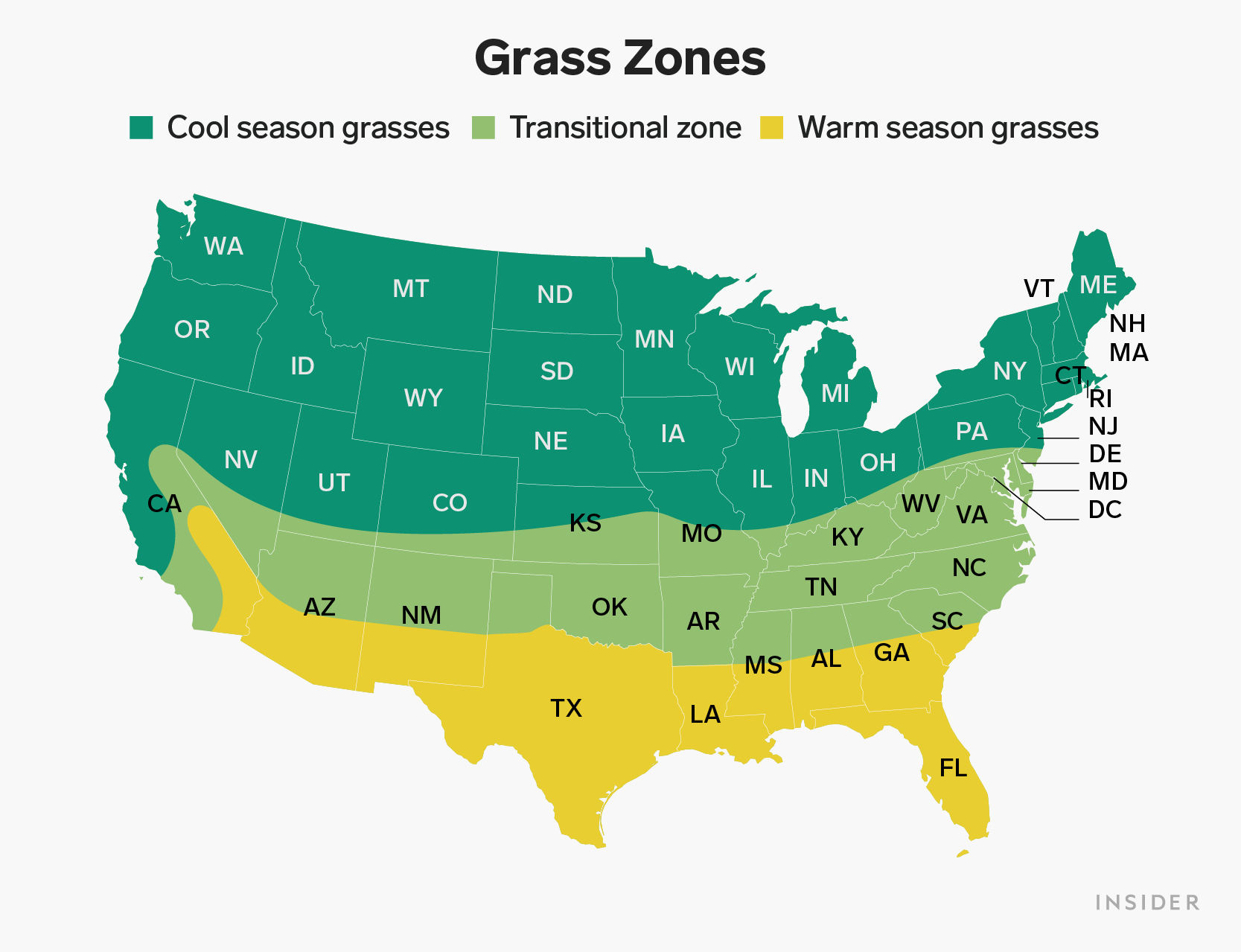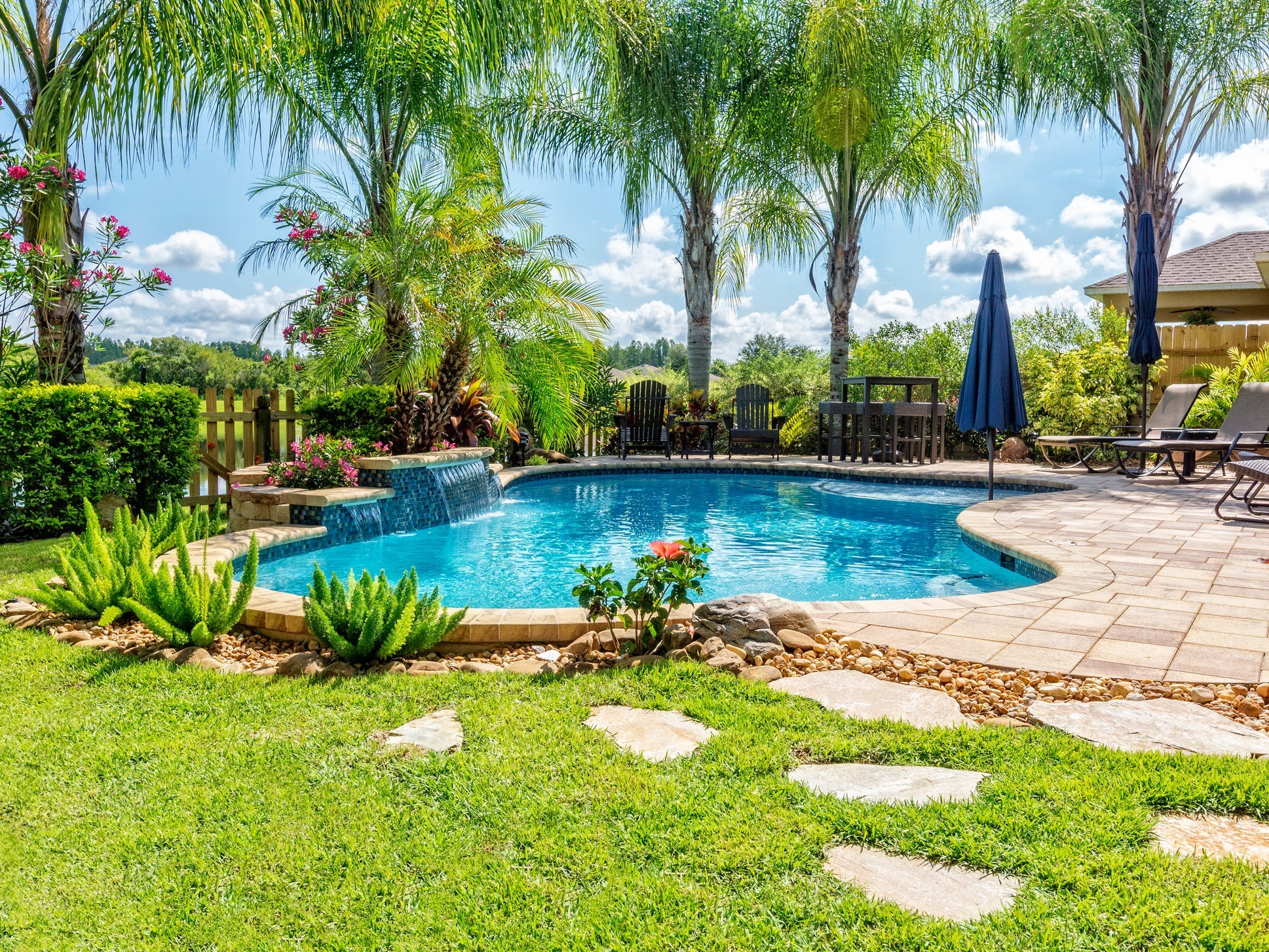
gorodenkoff/Getty Images
- Knowing your grass type will help you take the best care of your lawn.
- Some grass varieties thrive in hot weather, while others thrive in cool weather.
- Some grasses can grow in transitional zones, where there are warm summers and cold winters.
- Visit Insider's Home & Kitchen Reference library for more stories.
Whether you have a manicured, verdant front yard or an invitingly lush backyard, grass can make your home's exterior sparkle. Knowing your grass type can help you maintain your lawn and treat it with the care it deserves.
Carmen Uribe, landscape designer and CEO of the Los Angeles-based landscaping company A Greener Tomorrow, shares the most useful facts and her best tips on how to maintain your type of grass so every blade can stay healthy and green.
Cool-season grasses vs. warm-season grasses

You may not think of grass as a type of plant, it does in fact belong to a family of plants called Poaceae, which includes approximately 11,000 species. Similar to a USDA Plant Hardiness Zone Map, grass types are divided into cool-season and warm-season grasses, with a transitional zone in between. Different grasses will grow and thrive in their appropriate geographical region.
"Warm-season grasses grow in hot, humid areas that experience temperatures between 80 and 95 Fahrenheit," says Uribe. "These grasses go dormant and brown in the winter when temperatures drop below 65, which is why many homeowners [where temperatures drop] opt for cool-season varieties to ensure a beautiful lawn year-round."
On the other side of the spectrum, Uribe explains that prime cool-season locations include parts of the Midwest, Pacific Northwest, and most of the Northeastern regions of the US. "The temperatures here are cool and humid, and fall between 60 and 70 degrees Fahrenheit," says Uribe.
Both warm and cool-season grasses will have a longer dormancy period or show more signs of drought (brownness) when not in their adequate region.
The transitional zone, however, encompasses a strip of eastern central and mid-central regions of the US. This area allows for some grasses to survive in hot summers and cold winters.
Choosing the right type of grass for your geographical location will allow you to determine watering requirements, sun exposure levels, drought resistance, and traffic tolerance. Although there are thousands of species of grass, there are 10 popular types of cool-season and warm-season grasses in the US.
Take into account traffic tolerance
The key to maintaining a great-looking lawn is to be aware of any activity on and around it. This is especially important with front yard lawns on busy streets.
"Traffic tolerance refers to how resistant a lawn or sod variety is to pets, foot traffic, and regular activity and how fast it can recover," says Uribe. "Zoysia and Bermuda grass varieties have the highest traffic tolerance."
Cool-season grasses

Steve Prezant/Getty Images
Warm-season grasses

TerryJ/Getty Images
Insider's takeaway
The importance of knowing your grass type, especially when you are first building your lawn, will allow you to know how well your grass will thrive and its specific care requirements. Understanding your geographical region, levels of traffic and drought tolerance of your area, and your ability to care for your grass type are the key to a beautiful lawn.
"If you choose the wrong sod variety, the results will be disappointing because it will look sparse, yellow, or bald," says Uribe. "Before investing and planning on a landscape, you must determine your region, usage, and maintenance. Don't waste time and money!"
